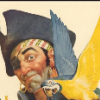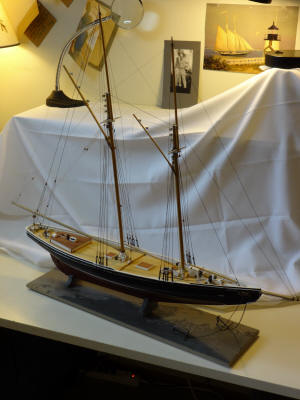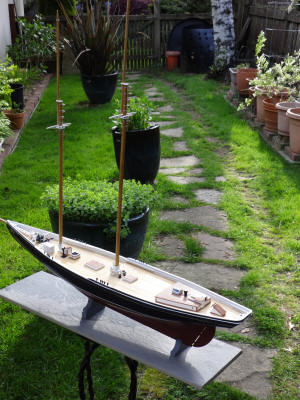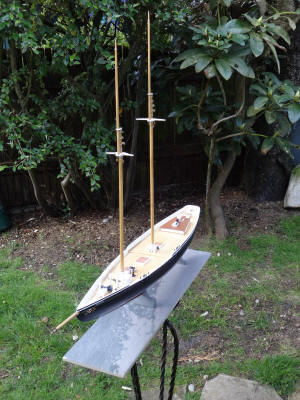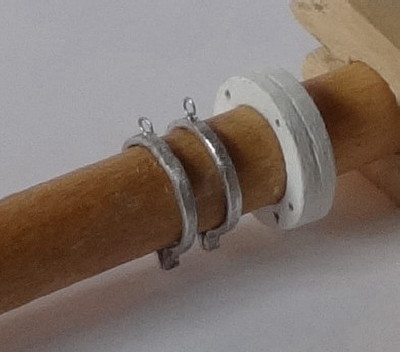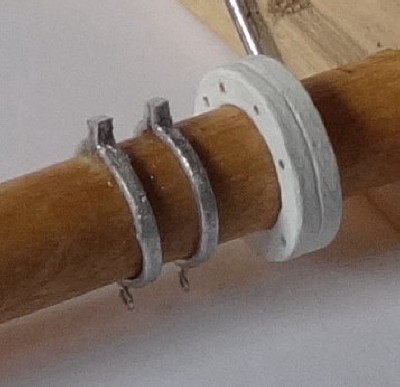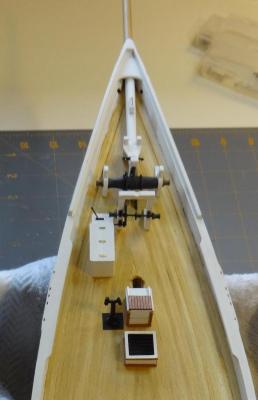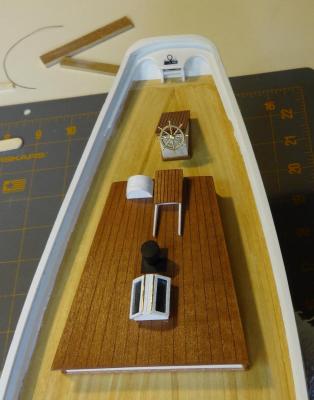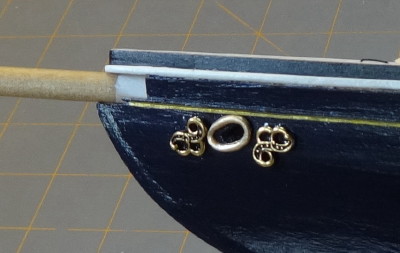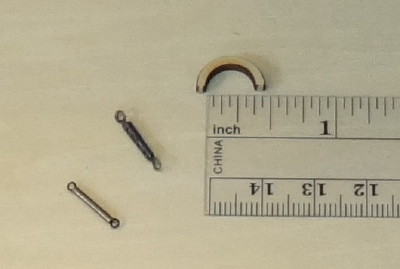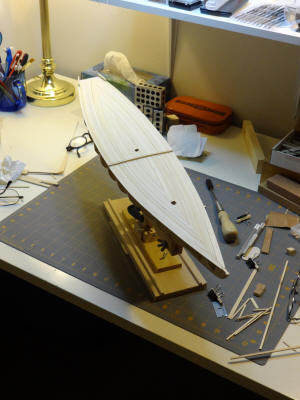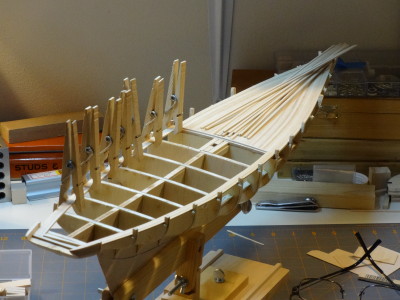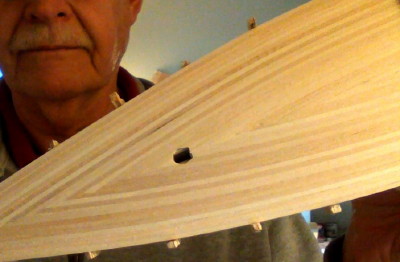-
Posts
30 -
Joined
-
Last visited
-
 GrandpaPhil reacted to a post in a topic:
Bluenose by John Kendziorski - FINISHED - Model Shipways - 1:64
GrandpaPhil reacted to a post in a topic:
Bluenose by John Kendziorski - FINISHED - Model Shipways - 1:64
-
 John Kendziorski reacted to a post in a topic:
How to tie a block to a spar so it sits parallet to the spar
John Kendziorski reacted to a post in a topic:
How to tie a block to a spar so it sits parallet to the spar
-
 John Kendziorski reacted to a post in a topic:
Super fine saw from Japan
John Kendziorski reacted to a post in a topic:
Super fine saw from Japan
-
 Blue Pilot reacted to a post in a topic:
Bluenose by John Kendziorski - FINISHED - Model Shipways - 1:64
Blue Pilot reacted to a post in a topic:
Bluenose by John Kendziorski - FINISHED - Model Shipways - 1:64
-
 John Kendziorski reacted to a post in a topic:
Friendship Sloop by DRW-FJ40 - BlueJacket Shipcrafters - Scale 1:12
John Kendziorski reacted to a post in a topic:
Friendship Sloop by DRW-FJ40 - BlueJacket Shipcrafters - Scale 1:12
-
 John Kendziorski reacted to a post in a topic:
Rattlesnake by DocBlake - Mamoli - 1/64 scale - Bob Hunt kit-bash log
John Kendziorski reacted to a post in a topic:
Rattlesnake by DocBlake - Mamoli - 1/64 scale - Bob Hunt kit-bash log
-
Thanks, Gents. I don't know about the big leagues, but I'll take up the challenge of each kit with joy.
- 18 replies
-
- bluenose
- model shipways
-
(and 1 more)
Tagged with:
-
 Elia reacted to a post in a topic:
Bluenose by John Kendziorski - FINISHED - Model Shipways - 1:64
Elia reacted to a post in a topic:
Bluenose by John Kendziorski - FINISHED - Model Shipways - 1:64
-
Final Bluenose post from me. I've taken it as far as I'm willing to. Might have to revise my motto because more things broke as I tried to repair others. She sits above my work station, and I have to say I'm amazed that she turned out as handsome as she did. Next, Constructo's Louise. John
- 18 replies
-
- bluenose
- model shipways
-
(and 1 more)
Tagged with:
-
 bhermann reacted to a post in a topic:
Bluenose by John Kendziorski - FINISHED - Model Shipways - 1:64
bhermann reacted to a post in a topic:
Bluenose by John Kendziorski - FINISHED - Model Shipways - 1:64
-
 Mirabell61 reacted to a post in a topic:
Bluenose by John Kendziorski - FINISHED - Model Shipways - 1:64
Mirabell61 reacted to a post in a topic:
Bluenose by John Kendziorski - FINISHED - Model Shipways - 1:64
-
 Mirabell61 reacted to a post in a topic:
Bluenose by John Kendziorski - FINISHED - Model Shipways - 1:64
Mirabell61 reacted to a post in a topic:
Bluenose by John Kendziorski - FINISHED - Model Shipways - 1:64
-
 hexnut reacted to a post in a topic:
Bluenose by John Kendziorski - FINISHED - Model Shipways - 1:64
hexnut reacted to a post in a topic:
Bluenose by John Kendziorski - FINISHED - Model Shipways - 1:64
-
Made a fair-looking waterline using 6mm Tamiya masking tape. Had to freehand the sweep under the stern—a little shaky there. Transfer letters didn’t work, so I printed hull/stern name plates on photo stock; couldn’t get a good color match because I’d chosen to paint the hull midnight blue. Prefab pintles/gudgeons and deadeyes/plates worked well enough, but had to thin the pintles/gudgeons to fit between rudder and sternpost. Mast/boom/gaff dowels were arc-ed; tried to use the convex sides as is while flattening the concave. Used aluminum paint to represent the various metal bands. Masking helped, but opted to freehand most of them—again, a little shaky. Booms and gaffs will get similar treatment. Base is a piece of tile. I rather like it for color and its seascape look. Still, she’s a good-looking model, and I’ve been contentedly entertained for the four months it’s taken to get this far. Having a philosophical nature, I find similarities to the process of aging--accepting, even chuckling at, little setbacks along the way. John
- 18 replies
-
- bluenose
- model shipways
-
(and 1 more)
Tagged with:
-
 John Kendziorski reacted to a post in a topic:
Size of Blocks - Modelshipways and others
John Kendziorski reacted to a post in a topic:
Size of Blocks - Modelshipways and others
-
 bhermann reacted to a post in a topic:
Bluenose by John Kendziorski - FINISHED - Model Shipways - 1:64
bhermann reacted to a post in a topic:
Bluenose by John Kendziorski - FINISHED - Model Shipways - 1:64
-
 hexnut reacted to a post in a topic:
Bluenose by John Kendziorski - FINISHED - Model Shipways - 1:64
hexnut reacted to a post in a topic:
Bluenose by John Kendziorski - FINISHED - Model Shipways - 1:64
-
 hexnut reacted to a post in a topic:
Bluenose by John Kendziorski - FINISHED - Model Shipways - 1:64
hexnut reacted to a post in a topic:
Bluenose by John Kendziorski - FINISHED - Model Shipways - 1:64
-
I used aluminum wire for the gooseneck. Malleable, fairly easy to bore. A thin steel brad will lock in the boom.
- 18 replies
-
- bluenose
- model shipways
-
(and 1 more)
Tagged with:
-
Thanks, Don. This is my first intermediate level build, and I wouldn't mind going at it again; it's been that satisfying. Hence, this first effort is practice, practice for the next Bluenose. John
- 18 replies
-
- bluenose
- model shipways
-
(and 1 more)
Tagged with:
-
This has been quite a challenge, but I’ve enjoyed every success, failure, broken assembly, all of it, except the quality of the kit. I really wanted to build a good looking model, but I realized early on that for me this would be a practice model, a mere reasonable facsimile of the Bluenose, so I’m just going with the flow, doing what I can, fudging some, and ignoring whatever is beyond my skill level. Most of the deck furniture is in place and work on the masts begun. I’ll use black paper and mini eyebolts made from 26 gauge black-coated copper wire. (I’ve no experience at soldering, and I don’t want to deal with the strong chemicals to blacken brass.) Purchased some parts: brass helm from Harbor Models; pintles/gudgeons and strapped deadeyes from BlueJacket; brass transfer lettering from Letraset. The scroll work around the hawse pipes comes out of my wife’s findings trays, as will the mockup turnbuckles. A medium point gold-ink ball pen did the thin line. About the kit: It is a disappointment because of the poor quality of the MS castings and the heavy charring of the laser cuts, most of which were at an angle rather than being perpendicular to the face. The rings for the mast coats, boom rest, and pin saddle measure 3/8”+ID while the masts are only 5/16”OD. I wondered if this kit was meant for the accomplished modeler with a well-furnished shop. Did I just get an “as-is” bargain (it wasn’t at bargain cost), or are most MS kits this way? I’m asking a question; that’s all. Two versions of turnbuckles. They'll be half this length on the model. The ME paint kit for the Bluenose was even more disappointing, and I don’t recommend it. Inconsistent viscosity from jar to jar, difficult to brush without leaving marks, tacky even after several days of drying. I found far better paints at the fabric store and for far less cost. Better coverage, a true flat finish, less drying time, and no tack. Laker (John)
- 18 replies
-
- bluenose
- model shipways
-
(and 1 more)
Tagged with:
-
I broke more stanchions before completing the deck, so I opted to remove them all. After installing the outer waterways plank, I referred to the drawings to begin engineering the replacements. And here I discovered that the drawings and the laser-cut bulkheads are not symmetrical; one half is not the mirror image of the other. I suggest any future builder check these things carefully. So here's how she looks without stanchions. Opted to build up the areas of the stanchions with solid wood, starting with 1/8"2 which I bent into shape, or nearly so. Will have to guess at the outward sweep towards the prow and the inward sweep toward the stern. Will build up as needed to meet the main rail. Scuppers won't appear inboards, but they can appear outboard. All in all, this seems a satisfactory solution to those fragile stanchions.
- 18 replies
-
- bluenose
- model shipways
-
(and 1 more)
Tagged with:
-
Moving along with the deck planks. You know, planking can be good contemplative work. Opted to simply follow the arc of the waterways, forming a herringbone effect over the keel. Not authentic, but handsome in its way. Trimmed just right, the planks snap into place and hold themselves without clamping. At most, a little finger pressure until the tack of the glue takes over. Before installing the outermost waterway, I'll use the plan drawing to design replacements for the broken stanchions, which now number seven, all from the same sheet. Hmm. Final result:
- 18 replies
-
- bluenose
- model shipways
-
(and 1 more)
Tagged with:
-
Persistence pays. I crafted those filler blocks and made good tenons on the masts. Now trying to figure out the thickness of the filler blocks between the quarter frame and either the fake stanchion or the stanchion at bh O. The two drawings related to this area are confusing. If the filler is 1/8" thick, what's the need for a fake stanchion between bhd O and the quarter frame? Can anyone clarify this for me? Meanwhile, worked on the bhd stanchions. Three broke clean off and two others showed signs of near breakage, all during what I consider normal handling and work procedures. Hmm. Waterways are next. Intend to install the first course inside the bhds then fill between stanchions before going on to the second inside course. The quarter deck will be something else. John
- 18 replies
-
- bluenose
- model shipways
-
(and 1 more)
Tagged with:
-
Bulkheads in place. Two of them got slightly out of square for some reason. I'll deal with this later after some head scratching. Glad I waited to fair the bhs until after installation. Bad luck with the filler blocks aft of bh "O", including running a blade into my thumb. Uff da!
- 18 replies
-
- bluenose
- model shipways
-
(and 1 more)
Tagged with:
-
Found a small [2 3/4"] suction vise with rubber jaws for $15 at Home Depot. Sure beats trying to hold these pieces between my arthritic digits. Makes for short work removing the char on the bulkheads. Decided to bevel them after installation [with due care at the stanchions]. Feel I'll do a better job with battens in place showing how the planks will want to lie. Waiting for that 1/8" chisel to arrive so I can work on the rabbeting. Golly, that keel will be just 1/16" thick, presuming I don't over cut! Think I'll make a jig to support it until a plank can be glued in. John
- 18 replies
-
- bluenose
- model shipways
-
(and 1 more)
Tagged with:
-
Keel joined. Transferred bearding and rabbet lines to the port side by burnishing the vellum photocopies. Starboard side scored through the vellum. Then both sides scored with straightedge and ships curve. Now struggling to chisel as needed. Feeling frustratingly incompetent, but will soldier on. Meanwhile, the bulkheads are coming around. Stanchions, after thinning, seem too fragile to continue without a spot of cyano to weld the wood fibers. The drawings are not as precise as I was used to in my profession, but I enjoy the challenge of learning how to interpret them correctly.
- 18 replies
-
- bluenose
- model shipways
-
(and 1 more)
Tagged with:
-
Kit arrived 12/31/14. Photocopied keel drawings onto drafting vellum, and began study of differences between those and the laser cuts. Some cuts are not perpendicular to the faces of the keel. Will sand those square and shim if necessary. An inch or two of the fore-section bends a bit to the right. Any suggestions for straightening that? Sheet of large bulkheads is warped. Blocks between them should correct most of that. Meanwhile, carefully removing the char will keep me suitably entertained. Hmm, just noticed that all three sections of the keel are 0.5-1.5mm short of the drawing. Maybe I can add material to flesh that out. John
- 18 replies
-
- bluenose
- model shipways
-
(and 1 more)
Tagged with:
-
In another post you mentioned blocks and deadeyes from Syren. Did you opt to get them, or are you satisfied with those that came with the kit? Myself, I'm sort of a basher, but I like to make improvements that please me and don't cost too much. Blocks and deadeyes from Syren seem to be a reasonable cost. What are your thoughts about that? John
About us
Modelshipworld - Advancing Ship Modeling through Research
SSL Secured
Your security is important for us so this Website is SSL-Secured
NRG Mailing Address
Nautical Research Guild
237 South Lincoln Street
Westmont IL, 60559-1917
Model Ship World ® and the MSW logo are Registered Trademarks, and belong to the Nautical Research Guild (United States Patent and Trademark Office: No. 6,929,264 & No. 6,929,274, registered Dec. 20, 2022)
Helpful Links
About the NRG
If you enjoy building ship models that are historically accurate as well as beautiful, then The Nautical Research Guild (NRG) is just right for you.
The Guild is a non-profit educational organization whose mission is to “Advance Ship Modeling Through Research”. We provide support to our members in their efforts to raise the quality of their model ships.
The Nautical Research Guild has published our world-renowned quarterly magazine, The Nautical Research Journal, since 1955. The pages of the Journal are full of articles by accomplished ship modelers who show you how they create those exquisite details on their models, and by maritime historians who show you the correct details to build. The Journal is available in both print and digital editions. Go to the NRG web site (www.thenrg.org) to download a complimentary digital copy of the Journal. The NRG also publishes plan sets, books and compilations of back issues of the Journal and the former Ships in Scale and Model Ship Builder magazines.



